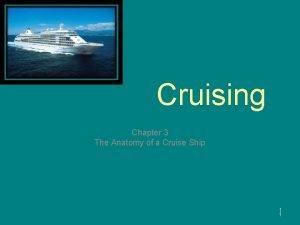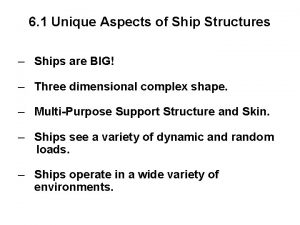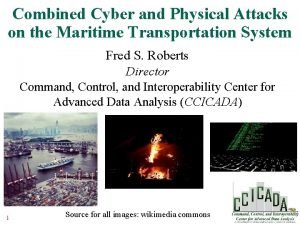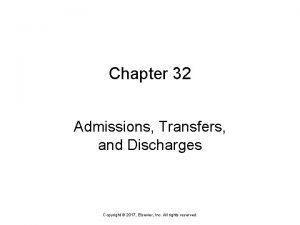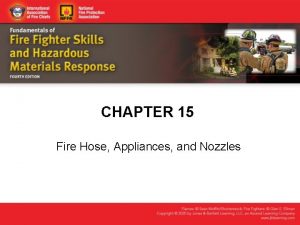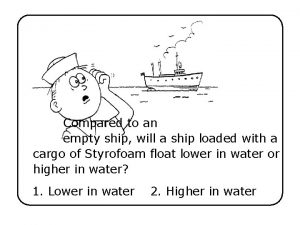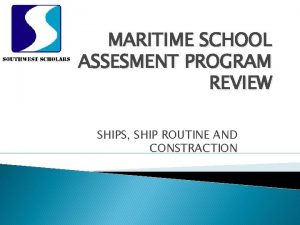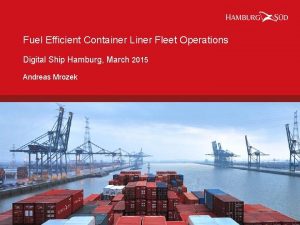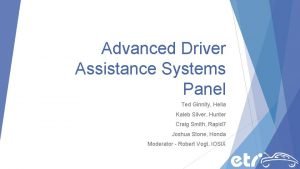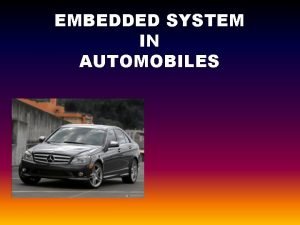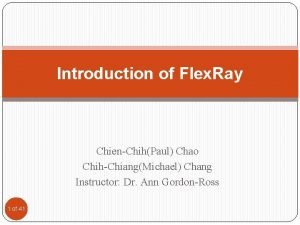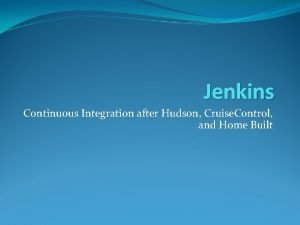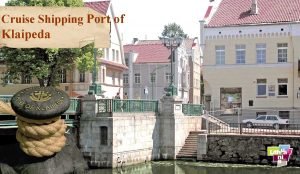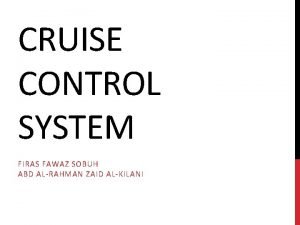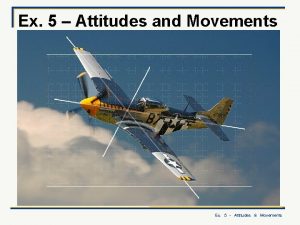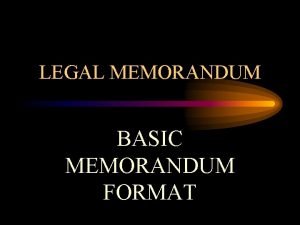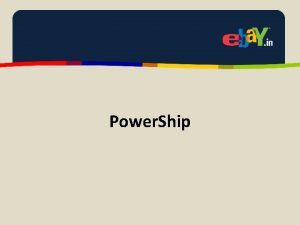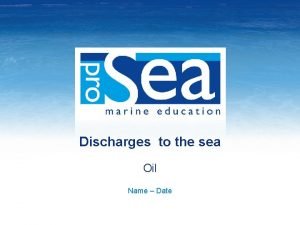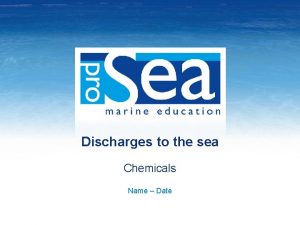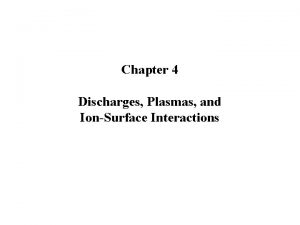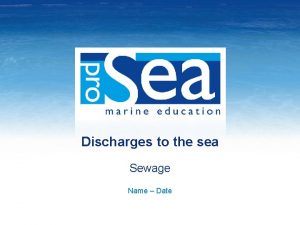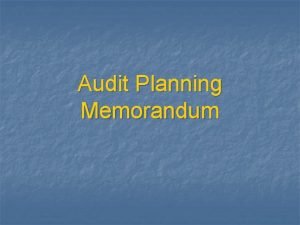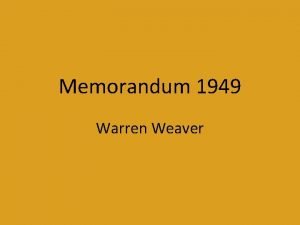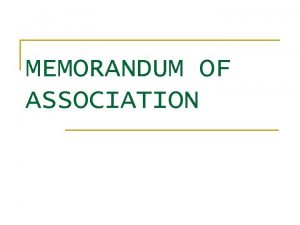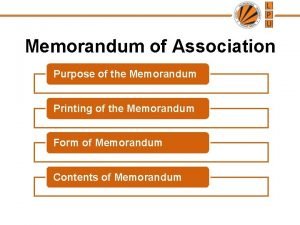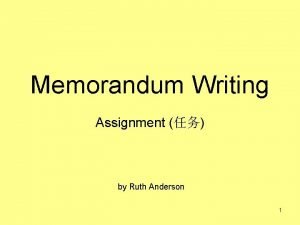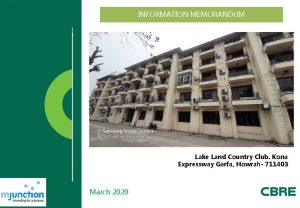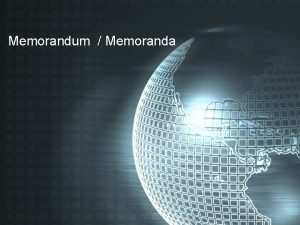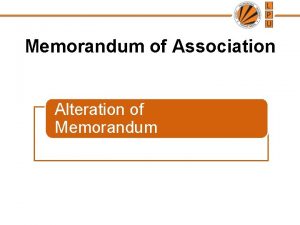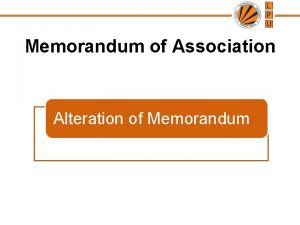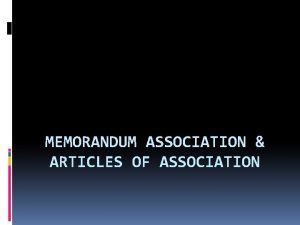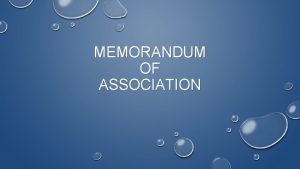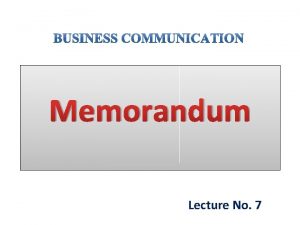CRUISE SHIP DISCHARGES MEMORANDUM OF UNDERSTANDING CRUISE OPERATIONS




















- Slides: 20

CRUISE SHIP DISCHARGES MEMORANDUM OF UNDERSTANDING CRUISE OPERATIONS IN WASHINGTON STATE Exhaust Gas Cleaning Systems Washwater Discharges Evaluation Amy Jankowiak Municipal Compliance and Vessel Sewage Prevention Specialist, Water Quality Program April 2, 2019

Exhaust Gas Cleaning Systems Overview § What they are § § § Exhaust stream mixed with seawater or fresh water to remove sulfur Solids separation Some with additional filtration § Why being installed § § Global efforts to reduce air emissions from ocean-going vessels; sulfur content from 3. 5% to 0. 5% by 2020 Puget Sound is in N. America emission control area has required sulfur content of 0. 1% since 2015 § Types of systems § § § Open-loop Closed - hybrid Closed

Exhaust Gas Cleaning Systems Washwater Evaluation § SCOPE 1. Compile & review existing available information: a) b) c) d) Operational characteristics Discharge information Water quality data Regulatory context – status, applicability, comparisons 2. Briefing by CLIA-NWC – Carnival 3. Summary of information at annual meeting with data gaps and recommendations

Exhaust Gas Cleaning Systems Operational Characteristics § Open loop § Seawater drawn into EGCS; mixed with exhaust gases; buffering of seawater dissolves/removes SOx producing sulfurous acid/sulfuric acid/calcium sulfate; some have additional filtration; addition of seawater for p. H buffering. Solids removed, stored, and sent for shoreside disposal. § Closed loop/hybrid § Fresh water and often caustic soda mixed and introduced to exhaust gases to chemically remove SOx; circulated internally; treated to remove some contaminants; bleed-off water sometimes continuously discharged and sometimes held for later discharge; hybrid either open or closed. § Time for changeover from fuel sources – changeover starts to be ready for compliance § Different requirements in different locations

Example Open Loop System and Sampling locations Provided by Carnival Corporation & PLC.

Water feed pumps and mixing/dilution pumps; ZAANDAM 7 -30 -18 Jankowiak Intake filter; ZAANDAM 7 -30 -18 Jankowiak Monitoring rack; ZAANDAM 7 -30 -18 Jankowiak Bag filters; GRAND PRINCESS 9 -26 -18 Jankowiak Soot sludge; NORWEGIAN BLISS 9 -8 -18 Jankowiak Soot filter; ZAANDAM 7 -30 -18 Jankowiak

Washington State Specifics • • 2018 Cruise Ship Statistics 21 cruise ships to Seattle 216 calls Avg 10. 5 hrs at berth ~ 18 hrs in WA waters Type by calls: – – 53% open loop 40% hybrid 6% none – low sulfur fuel 1% unknown • Unknown length of time discharges in WA waters • Discharge volume variable and includes seawater

Exhaust Gas Cleaning Systems Regulatory Context § Comparisons § International Maritime Organization (IMO) Marine Environmental Protection Committee MEPC 259. (10) § EPA Vessel General Permit (VGP) 2. 2. 26 § WA Surface Water Quality Standards Ch. 173 -201 A WAC

p. H Parameter International - IMO MEPC US EPA VGP Applicable Discharge Limits p. H § § ≥ 6. 5 at OB discharge except during maneuvering/transit; max difference inlet/outlet 2 p. H units [note IMO 6. 5, VGO 6. 0] OR The p. H discharge limit, at the overboard monitoring position, is the value that will achieve as ≥ 6. 5 at 4 m from the overboard discharge point with the ship stationary; can be calculated. ≥ 6. 0 at OB discharge except maneuvering and transit max difference b/w inlet and outlet of 2. 0 p. H allowed. WA most stringent; EPA more stringent than IMO Includes only cruise vessel data EPA Data Mean 6. 36 mean of avg 5. 77 mean of min* Comparison More acidic than WA criteria WA WQ Criteria Ambient WQ Criteria p. H must be within the range of 7. 0 -8. 5 with a human-caused variation within the above range of less than 0. 2 units.

PAH Parameter International - IMO MEPC US EPA VGP Applicable Discharge Limits Polycyclic Aromatic Hydrocarbons (PAH) § Flow rate (t/MWh) / Discharge Concentration limit (µg/L PAHphe equivalents) 0 -1 / 2250 2. 5 / 900 5 / 450 11. 25 / 200 22. 5 / 100 45 / 50 90 / 25 For a 15 -min period in any 12 -hr period, PAH concerntration may exceed above by 100%. WA WQ Criteria Ambient WQ Criteria Components of PAH are included in human health criteria (6 of 11): benzo(a)anthracene 0. 014/0. 021/. 00016 benzo(a)pyrene 0. 0014/0. 0021/0. 000016 benzo(b)fluroanthene 0. 014/0. 021/0. 00016 chrysene 1. 4/2. 1/0. 016 dibenz(a, h)anthracene 0. 0014/0. 0021/0. 000016 indeno(1, 2, 3 -cd)pyrene 0. 014/0. 021/0. 00016 IMO and EPA match; WA listed differently; includes all vessel data, not just cruise EPA Data Mean (ug/l) PAH = 25. 2 Benzo(a)anthracene = 0. 454 Benzo(a)pyrene = 0. 225 Benzo(b)fluroanthrene = 0. 662 Chrysene = 0. 699 Dibenzo(a, h, )anthracene = 0. 173 Indeno(1, 2, 3 -cd)pyrene = 0. 176 Comparison PAH - Depends on flow rate compared to IMO and EPA limits EPA mean concentrations higher than WA or federal Human Health Criteria for certain PAH components (listed parameters are greater than Criteria; 11 PAH parameters have Human Health Criteria)

Turbidity and Aesthetics Parameter International - IMO MEPC US EPA VGP Applicable Discharge Limits Turbidity Aesthetic Value § § § WA WQ Criteria Ambient WQ Criteria Turbidity must not exceed: 5 NTU Turbidity should not be greater than 25 over background when the FNU (formazin nephlometric units) or background is 50 NTU or less; or a 25 NTU (nephlometric turbidity units) 10% increase in turbidity when the or equivalent units, above the incoming background turbidity is more than 50 seawater turbidity. NTU. None Established Aesthetic values must not be impaired by the presence of materials or their effects, excluding those of natural origin, which offend the senses of sight, smell, touch, or taste. Turbidity: IMO and EPA the same; WA depends on background turbidity, more stringent <50 NTU Aesthetics: no limits in IMO or EPA; WA criteria most stringent Surface effects occur under some conditions Turbidity: EPA Data Mean 8. 2 FNU Comparison Depends on background

Nitrates+Nitrites Parameter International - IMO MEPC US EPA VGP Applicable Discharge Limits Nitrates + Nitrites § § Flow rate (t/MWh) / Discharge Concentration limit (mg/L nitrate + nitrite) 0 -1 / 2700 2. 5 / 1080 5 / 640 11. 25 / 240 22. 5 / 120 45 / 60 90 / 30 IMO and EPA match; WA listed differently Includes all vessel data, not just cruise WA WQ Criteria Ambient WQ Criteria No direct WQ criteria, however, affects DO which does have criteria (1 -day minimum in mg/l, except by natural conditions, not decrease more than 0. 2 mg/l…): Lowest 1 -day minimum of 7. 0 mg/L Dissolved Oxygen.

Toxics Parameter International IMO MEPC US EPA VGP WA WQ Criteria Applicable Discharge Limits Toxics Specific Toxics § § None Established Ambient WQ Criteria None Established Toxic, radioactive, or deleterious material concentrations must be below those which have the potential, either singularly or cumulatively, to adversely affect characteristic water uses, cause acute or chronic conditions to the most sensitive biota dependent upon those waters, or adversely affect public health. None Established all criteria in µg/l (acute / chronic) Arsenic 69 / 36 Cadmium 42 / 9. 3 Chromium (VI) 1, 100 / 50 Copper 4. 8 / 3. 1 Lead 210 / 8. 1 Mercury 1. 8 / 0. 025 Nickel 74 / 8. 2 Selenium 290 / 71 Silver 1. 9 (acute only) Zinc 90 / 81 no limits in IMO or EPA; WA criteria more stringent Cruise ship data only

Parameter EPA Data Mean (ug/l) Toxics cont. WA WQ Criteria (marine aquatic life criteria: acute / chronic) Comparison Arsenic 26. 64 69/36 Within WA Aquatic Life Criteria Cadmium 10. 25 42/9. 3 Mean concentrations higher than WA Aquatic Life Chronic Criteria Chromium 24. 33 1, 000/50 Within WA Aquatic Life Criteria Copper 63. 26 4. 8/3. 1 Mean concentrations higher than WA Aquatic Life Acute and Chronic Criteria Lead 22. 64 210/8. 1 Mean concentrations higher than WA Aquatic Life Chronic Criteria Nickel 80. 09 74/8. 2 Mean concentrations higher than WA Aquatic Life Acute and Chronic Criteria Selenium 42. 31 290/71 Within WA Aquatic Life Criteria Zinc 67. 89 90/81 Within WA Aquatic Life Criteria § § § Some data is above detection levels that are significantly higher than the criteria. Total (not dissolved); includes cruise ship only data. Inlet/background data not evaluated.

Exhaust Gas Cleaning Systems Washwater Research • Studies reviewed from: – Danish Ministry of the Environment 2012 – CE Delft 2015 – Germany – Federal maritime and Hydrographic Agency 2018 (preliminary findings) – Carnival Corporation DNV/GL 2019 – EPA 2011 – Japan – Ministry of Land Infrastructure, Transport and Tourism 2019 • • • Generally not a lot of research available Regulatory agencies and industry have evaluated Decisions by countries and ports have varied Industry and science ramifications from IMO policy Recent submittal to IMO for reconsideration

Exhaust Gas Cleaning Systems Carnival Briefing § Briefing to Ecology/Port of Seattle in December 2018 § Based on report “Compilation and Assessment of Lab Samples from EGCS Washwater Discharge on Carnival Ships” 2019 § Sampling (EPA approved methods/accredited labs) § 281 samples; 53 ships; 54 chemical constituents per sample § Constituent content per liter of water avg flow rate 45 t/MWhr; results – averages, post-EGCS minus inlet water values, outliers eliminated § Showed sample avg PAH and nitrate levels below IMO wash-water guidelines; German ordinance and EU’s standards

Exhaust Gas Cleaning Systems Summary § Existing information available on § § Operations Water quality data Laws, regulations, permits Available research § Initial data review shows certain parameters at times elevated above WA WQ criteria § Research shows variabilities in the contents of washwater and how ships’ EGCS function

Exhaust Gas Cleaning Systems Data Gaps § § § § § Surface effects characterization Discharge volume and frequency Bioaccumulation Loading of the discharges specific to Washington waters Effect of fuel choices on environmental media Other international regulations/limits Whole effluent toxicity testing Modeled effects of discharges to WA waters Relationship between system O&M and discharge quality

Exhaust Gas Cleaning Systems Washwater Preliminary Recommendations Port and Ecology Staff § Prioritize data gaps § Potential approach: – Identify a funding mechanism. – Gather additional information to identify EGCS discharges that may require controls in order to protect water quality. – Explore an amendment to the MOU that exceeds regulation. – As funded, develop scope and timeline.

Amy Jankowiak, Municipal Compliance & Vessel Sewage Prevention Specialist, Dept. of Ecology Northwest Regional Office (425) 649 -7195 amy. jankowiak@ecy. wa. gov Ecology Website: https: //ecology. wa. gov/ New Cruise Ship Website: https: //ecology. wa. gov/Regulations-Permits/Permitscertifications/Cruise-ship-memorandum-of-agreement -MOU
 What is cruise anatomy
What is cruise anatomy Elements of ships structure
Elements of ships structure Cruise ship pentest
Cruise ship pentest Plasma kallikrein
Plasma kallikrein Chapter 32 admissions transfers and discharges
Chapter 32 admissions transfers and discharges Single donut hose roll
Single donut hose roll Compared to an empty ship would a ship loaded
Compared to an empty ship would a ship loaded Flounder plate ship
Flounder plate ship Digital ship operations
Digital ship operations Understanding foodservice operations chapter 2
Understanding foodservice operations chapter 2 Cruise control integration
Cruise control integration Tom cruise disability
Tom cruise disability Adaptive cruise control
Adaptive cruise control Embedded system in automobiles
Embedded system in automobiles European cruise council
European cruise council Adaptive cruise control
Adaptive cruise control Cruise control vs jenkins
Cruise control vs jenkins Treasure island cruise
Treasure island cruise Lithuania cruise port
Lithuania cruise port Adaptive cruise control
Adaptive cruise control Cruise attitude
Cruise attitude
